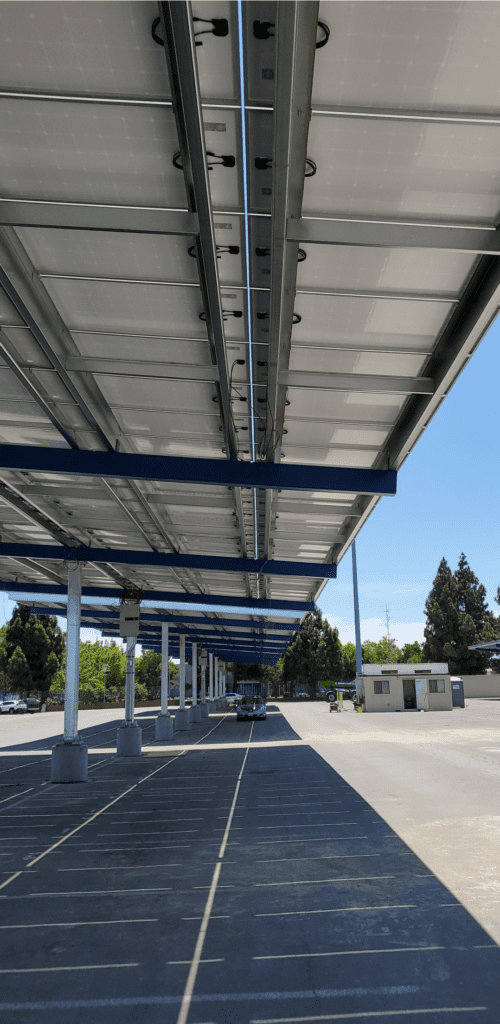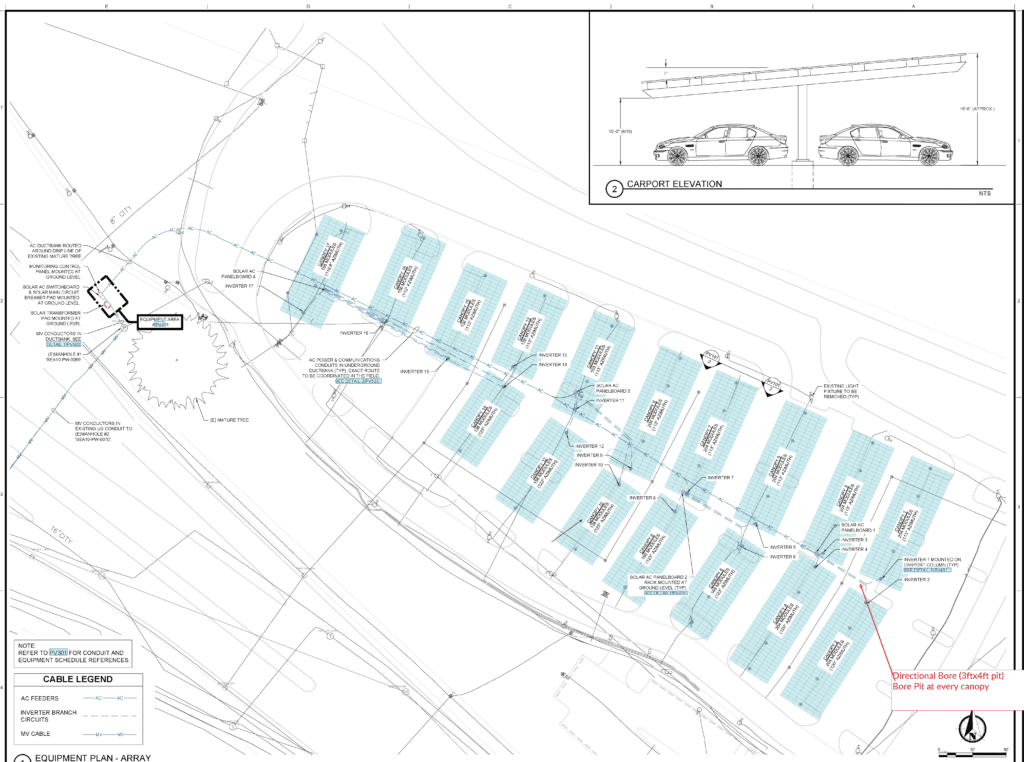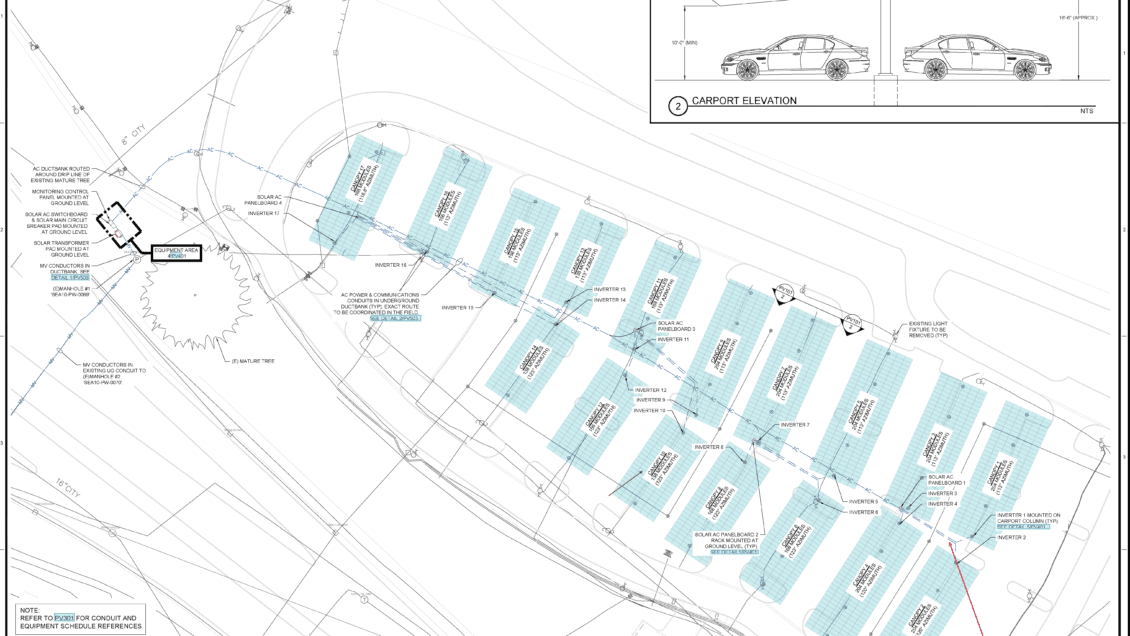Duke Energy contractors will begin installing 17 large solar canopies in the R-6 parking lot near Clemson Boulevard next week.
“The canopies will generate up to one megawatt of electricity for the campus and provide shade for vehicles parked there,” said University Facilities’ Utility Services Director Tony Putnam. The project should be substantially completed by August.

Duke Energy is paying for their installation and the University has agreed to lease them for 20 years.
Each canopy will have from 138 to 204 solar energy-collecting modules to convert the sun’s energy to electricity that will be transmitted through underground lines across Clemson Boulevard to the University. The canopies will vary in size because of the shape of the parking lot, and the largest will cover up to two dozen parking spaces. They will be lighted and built on a slant from 10 feet to more than 16 feet from the ground.
The largest main campus solar project to date will generate a fraction of the electricity the University requires, but it represents a big step forward in the quest to reduce Clemson’s carbon footprint, according to Putnam.
He said what University Facilities learns from this project could lead to the installation of more solar canopies in other campus lots, such as how much the weather affects the power generating capacity of the array.
Also interested is Kumar Venayagamoorthy, the Duke Energy Distinguished Professor of Power Engineering and Professor of Electrical and Computer Engineering, who has been developing plans for Smartparks – parking lots with solar panels – for more than a decade. When the R-6 project is finished and producing power, he will install sensors to gather real-time data about the performance of the solar array.
Venayagamoorthy is also founder and director of Clemson’s Real-Time Power and Intelligent Systems Laboratory, where he is pioneering artificial intelligence-based algorithms for power systems. He uses simulators for his research, gathering weather data from five weather stations located within a few miles of the lab.
He and his students will be able to monitor how solar irradiance, winds and temperatures affect the output from the solar project, enabling them to predict their performance. The forecasts could help energy managers make appropriate adjustments to reduce costs. For instance, on cloudy days when solar output is low, they could change the temperature in a building a degree or two to keep occupants comfortable while spending less on purchased energy.

“I think this is a great opportunity for our students and professors to go after research funding,” Venayagamoorthy added.
The R-6 parking lot is designated for overflow parking by student residents of Douthit Hills and Lightsey Bridge.
Alongside it is the P-7 Park-N-Ride lot for employees and students who want to pay just 50 dollars a year to park there and ride a shuttle to the center of campus. Parking and Transportation Services Director Dan Hofmann wants to install electric vehicle charging stations in the P-7 lot, possibly providing the charge from the nearby solar canopies.

